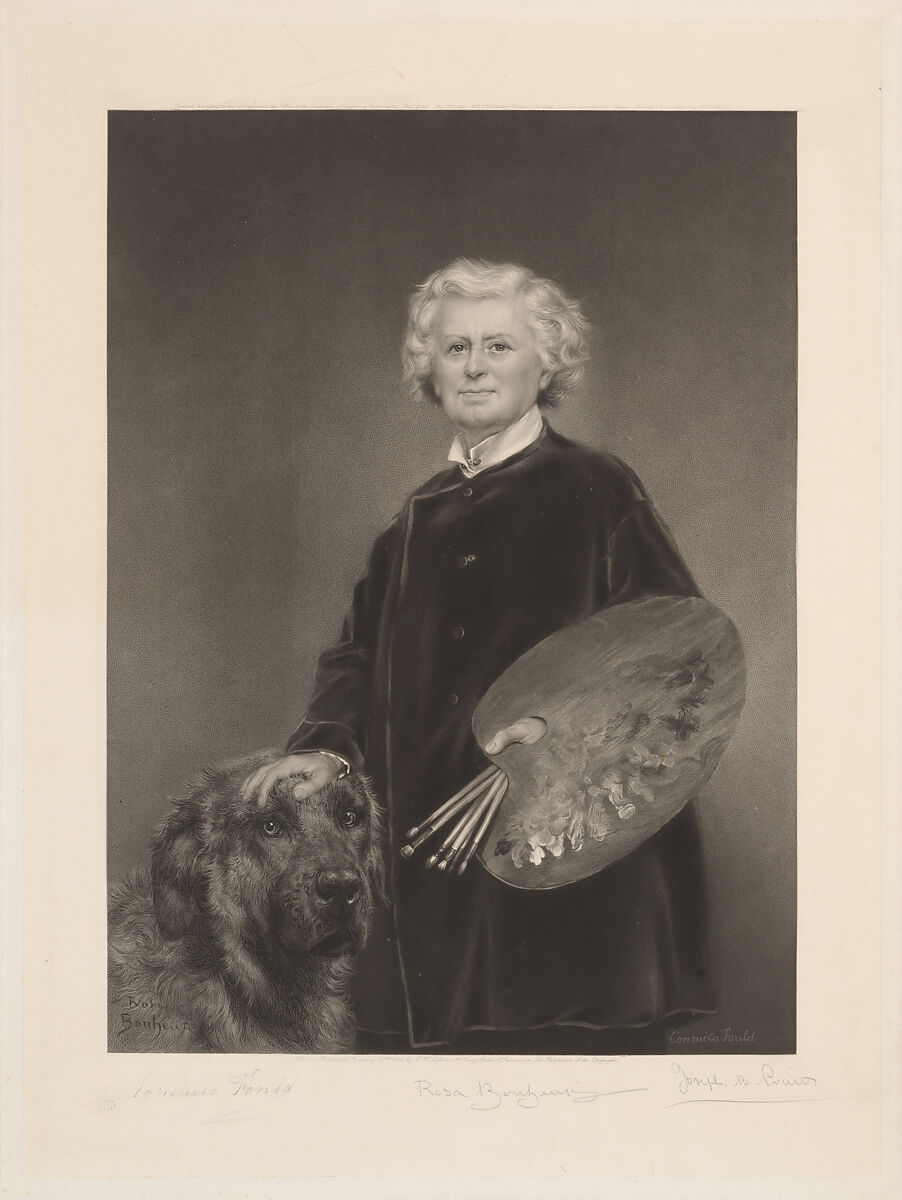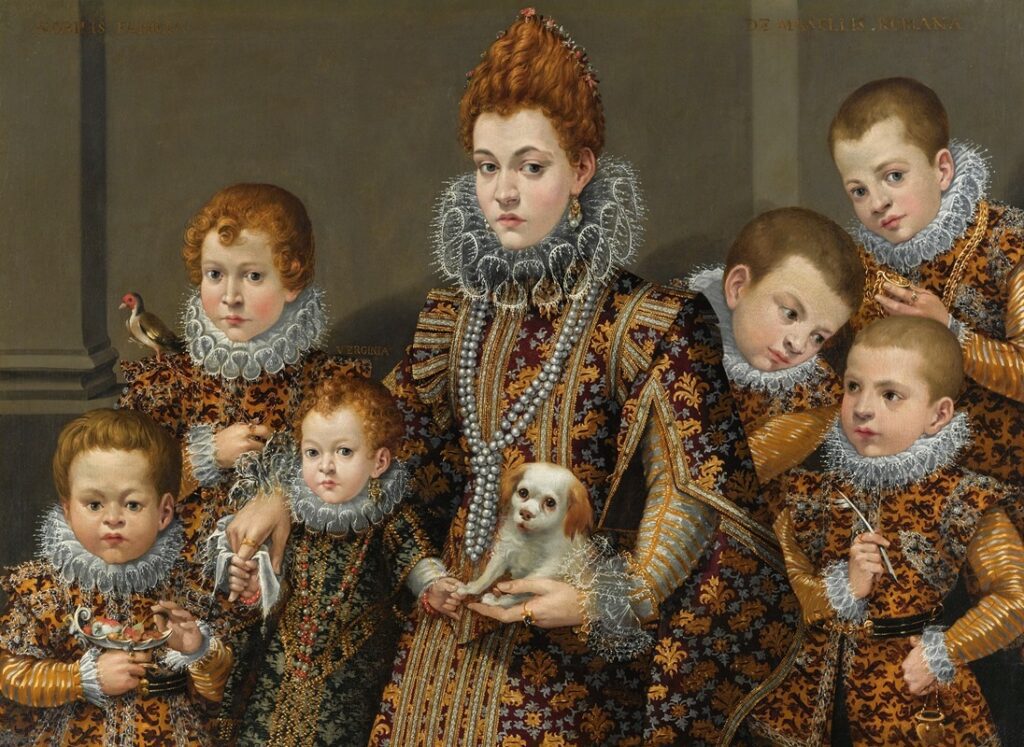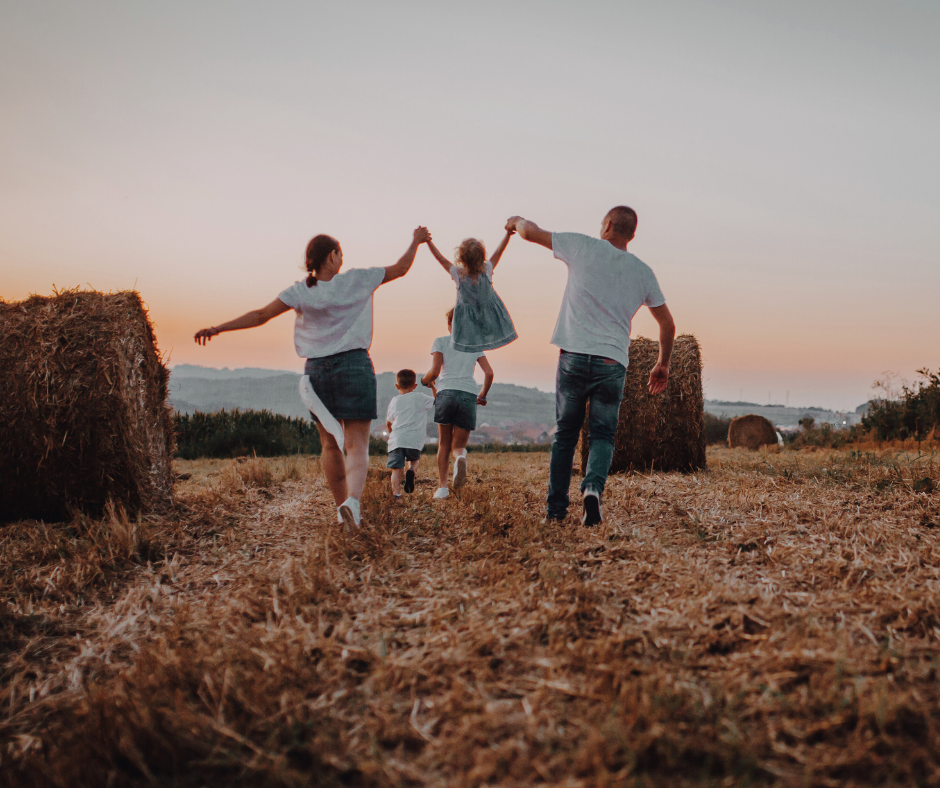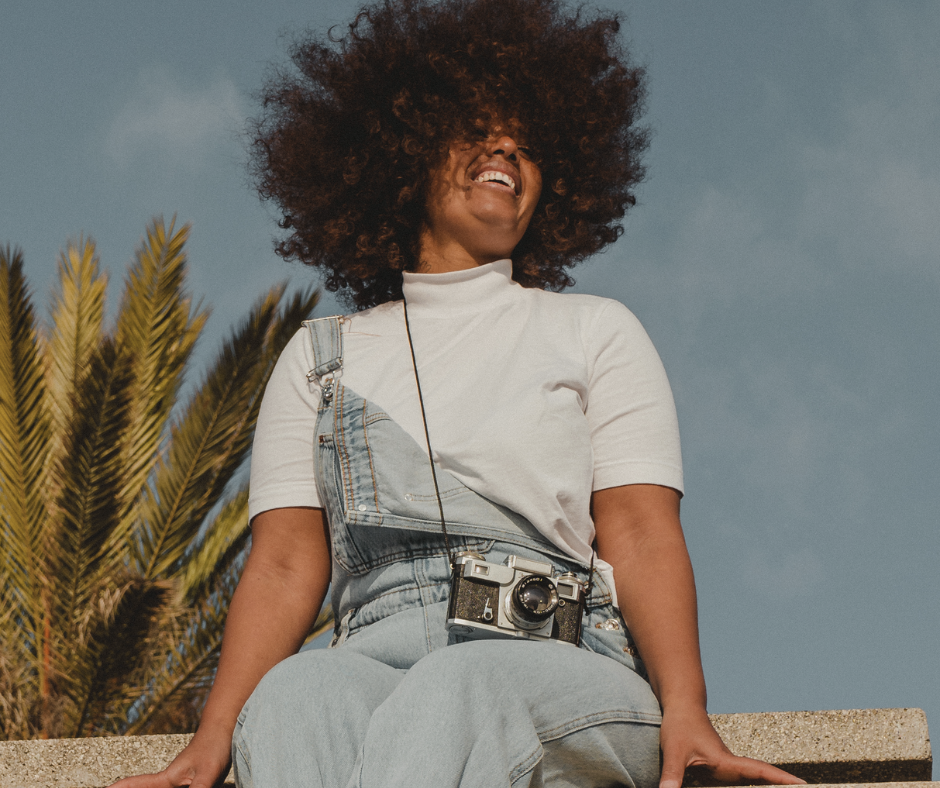
15 Paintings of Dogs in Honor of National Hug Your Hound Day
Summary
In celebration of National Hug Your Hound Day, this article highlights 15 famous paintings of dogs, showcasing their role as loyal companions throughout art history. From Frida Kahlo’s intimate self-portrait with her Itzcuintli to George Stubbs’ detailed depiction of a spaniel, these works honor the timeless bond between women and their beloved dogs.
Reflection Questions
- What feelings or memories do you associate with your dog, and how might those be reflected in art?
- How do the different portrayals of dogs in these paintings express loyalty and companionship in unique ways?
- What role does your dog play in your daily life, and how might you celebrate that bond today?
Journal Prompt
Reflect on the special relationship you have with your dog. Describe a recent moment that made you feel especially grateful for their companionship, and explore how this bond enhances your daily life.
In honor of National Hug Your Hound Day, we’re celebrating woman’s best friend by highlighting 15 famous dog paintings that honor the bond between humans and their loyal companions. Throughout art history, dogs have been depicted as symbols of loyalty, love, and comfort, and these works capture moments ranging from playful antics to serene companionship.
From Frida Kahlo’s personal connection with her beloved Itzcuintli dog to George Stubbs’ meticulous portrayal of a spaniel, these paintings remind us of the timeless and special relationship we share with our four-legged friends. Whether you’re hugging your own hound today or simply appreciating the artistry of these custom portraits, let’s take a moment to admire how dogs have been our companions in life—and in art—for centuries.
15 Dog Paintings in Honor of National Hug Your Hound Day
Self Portrait with Dog (Autorretrato con Perro Itzcuintli) by Frida Kahlo, 1938
Frida Kahlo’s Self Portrait with Dog (Autorretrato con Perro Itzcuintli), painted in 1938, is a striking example of her deeply personal style of portraiture. In this work, Kahlo presents herself in her traditional Tehuana dress, accompanied a tiny Mexican hairless dog, an Itzcuintli, which is Nahuatl for “dog.”
This breed held cultural significance in pre-Columbian Mexico. The dog, known for being a symbol of death and the afterlife in Aztec mythology, adds a layer of meaning to the portrait.
The composition is rich with symbolism, typical of Kahlo’s work, as she often incorporated elements from Mexican culture and her own life experiences into her art. Unlike other paintings and photos of Kahlo with her pets, she does not even look at the dog and there is a wide distance between them. Painted during a time of emotional turmoil just two years before her divorce from Diego Rivera, the self-portrait exudes a sense of solitude and introspection.
The Dog by Francisco de Goya, 1819-1823
Goya’s “The Dog,” was painted directly onto the walls of his home, the Quinta del Sordo, between 1819 and 1823. It is one of his haunting Black Paintings. The painting depicts a small dog, its head barely visible above a dark, sloping mass, gazing upwards with an expression of distress. The vast emptiness surrounding the canvas heightens the sense of isolation and helplessness, with some interpretations suggesting the dog is struggling against an unseen force, like drowning.
As with many of the Black Paintings, Goya never titled this work, and it was not intended for public viewing, reflecting his personal anguish and contemplation of mortality during this period. The ambiguous nature of “The Dog” has left viewers with a lasting sense of melancholy and mystery, making it one of Goya’s most emotionally potent pieces.
Little Girl in a Blue Armchair by Mary Cassatt, 1878
Little Girl in a Blue Armchair (1878) by Mary Cassatt shows a young girl lounging comfortably in a big blue armchair. The girl looks relaxed and a bit lost in thought, giving the scene a natural, everyday feel. Her dog (and best friend) lounges nearby, half asleep.
Cassatt’s style, influenced by her time with the Impressionists like Degas, comes through in the soft brushstrokes and focus on color and light. The bright blue chair really stands out against the girl’s pale dress, adding to the cozy, quiet vibe of the painting.
Portrait Of A Mastiff-Labrador In A Landscape by Rosa Bonheur, 19th Century
Rosa Bonheur’s Portrait of a Mastiff-Labrador in a Landscape is a great example of her unparalleled ability to capture animals with incredible realism and detail. Bonheur, a 19th-century French animalière painter, was known for her meticulous attention to anatomy and texture, particularly in her depictions of animals. Her style blended realism with a deep empathy for her subjects, as she often studied them extensively in natural settings to capture their true essence.

In this painting, Bonheur’s mastery of fur texture, musculature, and the dog’s lifelike expression demonstrates her commitment to authenticity. The landscape background complements the subject, adding depth and context to the animal’s portrayal while keeping the focus on the dog. Her work was often a blend of technical precision and a heartfelt respect for the natural world.
Pug Pandemonium by Carl Reichert, Late 19th-Early 20th Century
In Pug Pandemonium by Carl Reichert, the lively scene of chaos and mischief captures the playful energy he’s known for in his animal portraits. In this delightful painting, a cockatiel cheekily tugs at the tail of one pug while another pug lies on its back, seemingly exhausted from the antics, with a half-chewed letter on the ground nearby.
Reichert’s meticulous attention to detail, honed through his classical art training, is evident in the intricate rendering of fur, feathers, and the surrounding scene. The humorous scene brings out the playful personalities of the animals, blending realism with a sense of whimsy. Reichert’s talent for infusing life and charm into his works makes this painting both technically skillful and full of lighthearted fun.
Japanese Chin and Goldfish by Alexander Pope, Jr., 1921
Japanese Chin and Goldfish by Alexander Pope Jr., from 1921, shows a quiet and playful moment in a library. A curious Japanese Chin dog is completely captivated by two goldfish swimming in a bowl. Behind them, some flowers add a nice, decorative touch to the cozy setting.
Known for his detailed animal paintings, Pope captures the dog’s soft fur and the shiny surface of the fishbowl with great skill. The whole scene feels calm yet lively, showcasing Pope’s talent for turning simple, everyday moments into charming and engaging art.
Tucked Up by Frederick George Cotman, 1904
In this cozy painting by Frederick George Cotman, a dog is sweetly cuddled up on a blue pillow under a blanket, resting comfortably on a couch. The scene captures a warm, peaceful moment, with the dog seemingly lost in a dream, fully relaxed in its cozy spot. Known for his detailed interiors and charming portrayals of domestic life, Cotman’s touch brings out the soft textures of the blanket and pillow, adding to the overall feeling of comfort and contentment.
Court Lady with Dog by Mihata Jōryū, 1830s
Court Lady with Dog by Mihata Jōryū, created in the 1830s, is a beautiful example of Japanese ukiyo-e art and reflects the artist’s training in the Shijō school. The Shijō school, known for its emphasis on naturalism and fluid brushwork, is evident in the delicate lines and graceful portrayal of the court lady, who is dressed in elegant traditional clothing. Beside her is a small dog, symbolizing companionship and loyalty, adding a tender, intimate touch to the scene.
Jōryū’s background in the Shijō style shines through in the flowing garments, soft colors, and attention to natural details. His work often focused on capturing the aesthetics and elegance of the era, and this composition is no exception. The serene interaction between the lady and her dog is set against a simple background, allowing the subjects to take center stage and exude a sense of quiet dignity and grace, characteristic of both courtly life and the Shijō school’s artistic philosophy.
Portrait of a Woman Reading with a Dog by Gerda Wegener, Late 19th Century
Portrait of a Woman Reading with a Dog by Gerda Wegener, created in the late 19th century, reflects Wegener’s distinct blend of elegance and modernity. The painting features a stylish woman engrossed in a book, with a small dog curled up beside her, adding a sense of intimacy and warmth to the scene. Known for her vibrant depictions of women and bold use of color, Wegener captures both the fashionable nature of her subject and the tranquil mood of the moment.
Wegener was influenced by Art Nouveau and early Art Deco, and her work often celebrated the beauty and independence of women. In this portrait, her attention to detail in the woman’s attire, the flowing lines of the furniture, and the soft presence of the dog highlight her mastery of composition. The relaxed pose of the woman and her companion exudes both sophistication and comfort, showcasing Wegener’s ability to bring a sense of modern femininity to her portraits.
Portrait of Maria Róża Kronenberg and Róża Maria Karolina Kronenberg with a Dog by Józef Simmler, 1860
Portrait of Maria Róża Kronenberg and Róża Maria Karolina Kronenberg with a Dog, painted by Józef Simmler in 1860, is a refined and elegant depiction of the two prominent women from the influential Kronenberg family. The portrait features both Maria Róża Kronenberg and her daughter, Róża Maria Karolina Kronenberg, posed gracefully alongside their dog, which adds a warm, familial touch to the composition.
The dog, often a symbol of loyalty and affection, enhances the portrait’s sense of closeness between the sitters, giving it a more personal and intimate atmosphere. Simmler, known for his detailed and realistic portrayals, highlights the wealth and status of the Kronenberg family through the intricate details of the women’s fashionable attire and the serene, formal setting.
The Artist’s Dog Flèche by Henri de Toulouse-Lautrec, 1881
The Artist’s Dog Flèche by Henri de Toulouse-Lautrec, painted in 1881, is a charming portrait of the artist’s beloved dog. Flèche is depicted with character and warmth, sitting calmly with an alert yet relaxed expression. This early work shows Lautrec’s affection for his dog and hints at his talent for capturing the personality of his subjects.
The painting has a casual, almost playful vibe, with Flèche’s shaggy fur and laid-back posture adding to the sense of familiarity. Lautrec’s simple, soft brushstrokes and light palette give the piece a gentle, intimate feel, offering a glimpse into the artist’s personal life and unconditional love for this pup.
Dog Lying in the Snow by Franz Marc, 1911
Dog Lying in the Snow by Franz Marc, painted in 1911, captures a peaceful, almost dreamlike moment of his dog Russi resting in a snowy landscape. Marc, known for his bold use of color and love of animals, depicts the dog in simplified, flowing forms that blend harmoniously with the surrounding snow.
The painting is part of Marc’s expressionist style, where he used vibrant hues and abstract shapes to convey emotion and deeper meaning. Marc’s characteristic focus on the spiritual connection between animals and their environment is evident in this beautifully composed and emotive piece. The influence of Cubism is also clear.
The Artist’s Wife and His Setter Dog by Thomas Eakins, 1884–89
In The Artist’s Wife and His Setter Dog, Thomas Eakins captures an intimate moment between his wife, Susan, and their dog. The painting reflects Eakins’ deep love for realism, with precise attention to detail in both the textures of his wife’s clothing and the setter’s fur. The composition feels quiet and personal, as Susan sits calmly, with the dog lying at her feet, adding a sense of companionship and domesticity.
Eakins’ mastery of light and shadow gives depth to the scene, making it both a tender portrayal of family life and a technical study of form and space. The connection between the two figures speaks to the warmth and tranquility of their home life.
Woman and Dog at Table by Pierre Bonnard, 1908
Woman and Dog at Table by Pierre Bonnard presents a cozy, domestic scene filled with his characteristic use of soft, rich colors and loose brushwork. In the painting, a woman sits quietly at a table while a small dog, perched beside her, shares in the intimate moment.
Bonnard, known for his focus on everyday life (genre paintings), captures the simplicity and warmth of the scene, with the woman’s gentle posture and the dog’s attentive gaze reflecting the bond between them. The painting’s vibrant yet calming palette, combined with the slightly abstracted forms, creates an impression of peaceful familiarity, evoking the quiet joys of home life.
Brown and White Norfolk or Water Spaniel by George Stubbs, 1778
Brown and White Norfolk or Water Spaniel by George Stubbs is a beautifully detailed portrait of a spaniel. Known for his realistic portrayals of horses and other animals, Stubbs meticulously captures the dog’s coat, stance, and alert expression, bringing the spaniel to life with incredible precision.
The dog is set against a somewhat fantastical background with willows, clouds, and a river. This work not only reflects his deep understanding of the animals he painted but also elevates the genre of animal portraiture, turning what could be a simple study into an elegant and dignified work of art.
Final Thoughts

As we reflect on these beautiful works of art that capture the loyal companionship of dogs throughout history, let’s take a moment to honor our own furry friends. Whether they’re by our side on life’s adventures or curled up next to us on the couch, our dogs bring joy, comfort, and unconditional love into our lives.
Today, on National Hug Your Hound Day, show your appreciation for the special bond you share with your pup. Give them an extra cuddle, take them on a long walk, or simply spend some quality time together. Let’s celebrate woman’s best friend and the happiness they bring us every single day.








